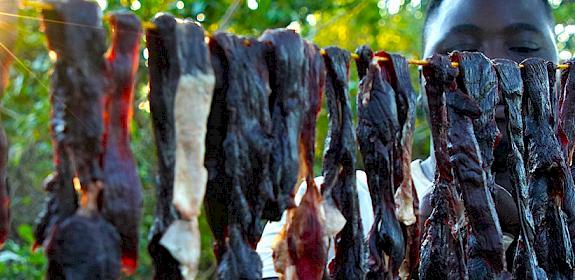Global Tiger Day 2014—future for Tigers uncertain
World Tiger Day, 29th July 2014—Celebrations of the annual Global Tiger Day are taking place worldwide today, but the future of the rare cat remains of concern, warns TRAFFIC. In 2010, at the Tiger Summit in St Petersburg, the 13 Tiger range States—Bangladesh, Bhutan, China, Cambodia, India, Indonesia, Laos, Malaysia, Myanmar, Nepal, Russia, Thailand, and Viet Nam—committed to a Global Tiger Recovery Program which aims to secure “Tx2”, a doubling of wild Tiger populations by the next Year of the Tiger in 2022.

Poaching, alongside habitat destruction and prey base loss are currently the greatest threats to wild Tigers today. Poached animals, obtained both opportunistically and through organized criminal activities, are trafficked to supply persistent market demand for bones and other body parts, used in non-traditional tonics, traditional medicines and for their pelts and other body parts, such as teeth, skin and claws, used as decorative items.
Earlier this month a comprehensive report co-authored by TRAFFIC into the progress made by countries in implementing measures to protect the four species of Asian Big Cats (Tiger, Asiatic Lion, Leopard and Snow Leopard) revealed that parts of a minimum of 1590 Tigers have been seized in illegal trade between January 2000 and April 2014 – an average of two animals per week.
“Overall, the estimated number of Tigers represented by the seizures has grown since the year 2000, from below 100 annually to nearing 150 annually,” states the report.
“With only 31% of these seizures taking place close to protected areas, it’s unclear how many of the parts seized in trade are from Tigers of wild origin, but one thing is certain—that all international Tiger part trade is illegal and threatens to stimulate a demand that would be devastating for the world’s wild Tigers,” said Natalia Pervushina, Global Tiger Programme Leader for TRAFFIC and WWF.
The report, Review of implementation of Resolution Conf. 12.5 (Rev CoP16) on conservation of and trade in Tiger and other Appendix I Asian big cat species (PDF, 2.7 MB), which was commissioned by the Secretariat of the Convention on International Trade in Endangered Species of Wild Fauna and Flora (CITES), recommends Tiger range countries review and strengthen their relevant national legislation to ensure it precludes all trade in Tiger parts regardless of their origin.
Other recommendations include the adoption of a “zero tolerance” policy towards online advertising for Tiger and other protected species products, following evidence this is becoming a major mechanism facilitating illicit transactions. E-Commerce websites were encouraged to ensure no online advertisements are posted for illegal Tiger products.
Improvements in enforcement activities were also urgently called for in Indonesia, where 20% of all Tiger part seizures took place between 2010–2012.
Meanwhile Myanmar is also of particular concern because of its role as a major wildlife trading hub, with parts of Tigers and other endangered species sold to tourists in border markets such as Mong La, Golden Rock and Three Pagodas Pass, and creating a major law enforcement challenge for Chinese and Thai border authorities.
The report also urged countries to counter the growing use of Tiger parts and derivatives as luxury items as a matter of urgency through targeted behavioural change interventions to reduce consumer demand.
In February this year, the UK Government announced its support for a programme co-ordinated by TRAFFIC to protect and recover wild Tigers by reducing the demand for their bones and other body parts.
“Improving legislation and changing consumer behaviour are among the measures needed to protect wild Tigers, but such efforts need to be backed up by appropriate law enforcement action to reduce poaching on the ground and to ensure anyone involved in trafficking of Tigers is brought to justice,” said Pervushina.
This October, representatives of Tiger range countries will meet in Dhaka, Bangladesh, to review their progress towards implementing the Global Tiger Recovery Program and the progress they have made towards achieving the Tx2 goal of doubling the number of wild Tigers by 2022.
However, even the wild Tiger population is presently not known accurately say WWF, who today called on range countries to carry out Tiger population surveys as a matter of urgency, noting that systematic national surveys take 6–12 months to plan and a minimum of a year to complete. Thus these surveys must start now if an updated global Tiger figure is to be released by the halfway point to Tx2 in 2016.
“We are more than a third of the way to 2022. We need to move at a faster, more determined pace if we hope to achieve the Tx2 goal,” said Mike Baltzer, Leader of WWF’s Tigers Alive Initiative.





